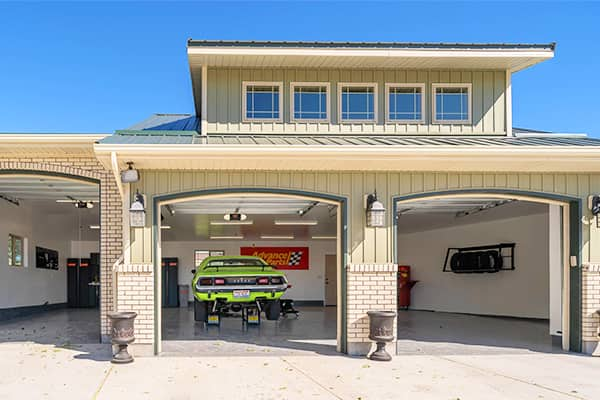
Today's go karts are anything but greasy kids stuff. Read on to discover what makes these these mechanically impressive machines tick.
Some people love go kart racing – simply called “karting” by the true blue fans – because of the competition. Others love it for the family atmosphere at events. Still others love it because of the vehicles themselves – and, if you’re a DIYer, you’ll probably want to know just how these racing machines are constructed.
Recreational participants sometimes construct their own vehicles, while competitive racers must purchase factory-made ones. It’s all about safety. Racers on big tracks reach speeds of up to 152 miles per hour in professional-grade karts that typically weigh 165 to 175 pounds (75 to 79 kilograms).
Here’s more...
Engines
“The TaG division,” says John Ferris, president of the World Karting Association, “is the most popular. TaG stands for ‘touch and go’ and its vehicles have an electric start, like a car, while the other divisions need an external starter, like Indy cars. TaG vehicles have water-cooled engines, while the rest have air-cooled ones.”
Typically, backyard / amusement park karts are powered by 4-stroke engines or electric motors, while racing karts use small 2-stroke or 4-stroke engines. “All classes of racing,” John says, “allow the owner to work on the engine – or to hire someone else to do so – by putting in new pistons or rings and the like. Some classes allow for rebuilding of engines that include modifications to make the kart go faster.”
The sport has evolved over the years and here is just one way in which that’s true. “Classes that allow modifications used to be the most popular,” John explains. “In these open classes, you could modify however you wanted – at least within certain limits. Local Saturday tracks, sometimes called outlaw tracks, still have those classes, but there is no tinkering in the big races. Those races are like NASCAR with strict specifications for engines.”
When people do modify engines, they typically take a factory built one and bring the specs up to the limits, perhaps by raising ports – or by lowering ports. “You can’t add extra ports,” John cautions, “because you need to use stock engines.”
More specifically:
- 4-stroke engines are typically air-cooled, with about 5 to 20 HP. Manufacturers include Briggs & Stratton, Tecumseh, Kohler, Robin and Honda.
- More powerful 4-stroke engines are manufactured by Yamaha, TKM, Biland and Aixro (Wankel), offering up 15 to 48 HP.
- 2-stroke engines are built by WTP, Comer, IAME (Parilla, Komet), TM, Vortex, Titan, REFO, TKM, PRD, Yamaha and Rotax, ranging from about 8 HP for a single-cylinder 60 cc unit to more than 90 HP for a twin 250 cc.
- The most popular classes use TaG 125 cc units, which are electronically limited to 16,000 RPM.
Suspension
Karts do not come with any sort of suspension system. In fact, shock absorbers and springs are banned from the vehicles, according to John. “Instead,” he says, “the frame of the vehicle itself serves as suspension. A kart’s chrome tubing creates spring and flex, allowing the vehicle to spring and come back.”
Chassis
Although the chassis needs to be flexible enough to serve as suspension, as mentioned above, it must also be stiff enough not to break. In general, a stiffer chassis is preferable for dry conditions, while a more flexible chassis is preferable in wet and/or other poor traction conditions.
To find which chassis – and accompanying engine – is appropriate for World Karting Association events, see the chart at the bottom of this page.
Transmission
Because karts do not have a differential, the chassis is designed so that the inside rear tire lifts off the ground when cornering. “Karts are intentionally designed this way for speed,” John says, “so the inside tire doesn’t slow you down when you race. You may not notice as the tire lifts when you corner, but it does.”
Tires
Tires and wheels are significantly smaller than on a typical car, with Bridgestone, Dunlop and Maxxis making tires, along with kart-specific manufacturers such as MG, MOJO and Vega. Just like with cars, there are different types of tires for varying weather conditions. On a dry track, slicks are appropriate. Slicks range from very soft compositions that provide maximum grip to much harder ones that are longer lasting but provide less grip.
Rain tires are used in wet weather, and are also known as “wets.” These are narrower tires than slicks and are not permitted in all racing classes. John points out that many organizations specify how soft your tires are allowed to be.
More sophisticated karts contain monitoring systems that keep track of RPM, lap timing, number of laps, best lap, cooling system temperature, exhaust gas temperature, g-force (lateral and longitudinal acceleration), throttle position, steering wheel position, brake pressure and more.
DIY
If you’re interested in building your own kart for recreational karting, Popular Mechanics offers advice. This article shares how you can build your own kart for $689.15 in just one day, offering sites that provide the materials and resources that you’ll need. Remember that, if you’re interested in more serious racing, homemade karts are not permitted.
Editor's note: Advance Auto Parts has the tools and accessories for most moving vehicles--at great savings and values. Buy online, pick up in-store in 30 minutes.
Photos courtesy of World Karting Association.








